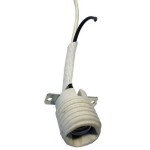Recessed Lighting in Living Rooms with Ceiling Fans: Essential Considerations
Recessed lighting and ceiling fans are common fixtures in modern living rooms. While they serve different purposes, combining them can enhance the aesthetics and functionality of the space. Here are some essential aspects to consider when incorporating recessed lighting into a living room with a ceiling fan:
Placement and Positioning
The placement of recessed lights and the ceiling fan should be carefully planned to maximize lighting while avoiding shadows and glare. Position recessed lights around the perimeter of the room or above the seating area to create ambient lighting. Ensure that the ceiling fan blades do not obstruct the light emitted from the recessed lights.
Lighting Intensity and Dimmability
Choose recessed lights with adjustable intensity to control the brightness in the room. Dimmable lights allow you to create different lighting moods, from bright and lively to soft and intimate. Consider the overall size of the room and the desired ambiance when selecting the wattage and brightness of the recessed lights.
Light Distribution and Aiming
The distribution and aiming of the recessed lights play a significant role in shaping the lighting effect in the room. Opt for recessed lights with adjustable trim or baffles that allow you to direct the light in specific directions. Aim the lights toward the ceiling or specific objects to create accents or highlight architectural features.
Color Temperature and CRI
The color temperature of the recessed lights determines the warmth or coolness of the light. Warm white (2700-3000K) creates a cozy and inviting atmosphere, while cool white (4000-5000K) provides a more energizing and brighter environment. Choose lights with a high Color Rendering Index (CRI) to ensure accurate color reproduction.
Compatibility with Ceiling Fan Speed and Airflow
When installing recessed lights around a ceiling fan, it's crucial to consider the fan's speed and airflow. The vibration and movement of the fan blades can cause flickering or rattling in the recessed lights. Opt for recessed lights specifically designed for ceiling fan compatibility or use LED lights that are less susceptible to vibrations.
Ventilation and Heat Dissipation
Recessed lights generate heat, especially when used with incandescent bulbs. Ensure that the recessed lights have adequate ventilation to dissipate heat and prevent overheating. Choose recessed lights with open trims or ventilation slots to allow for airflow. Avoid placing recessed lights too close to the ceiling fan, as it can obstruct airflow and cause premature failure.
Aesthetics and Design
The design and aesthetics of the recessed lights should complement the style of the living room and the ceiling fan. Choose recessed lights with trims that match the ceiling finish or opt for decorative trims to enhance the visual appeal of the space. Consider the size, shape, and material of the recessed lights in relation to the overall design scheme.

Led Recessed Lighting Right Way

Lots Of Windows Ceiling Fan And Recessed Lights Are Great Additions Traditional Conservatory Dc Metro By Post Designers Builders Division Sundecks Inc Houzz

Recessed Lighting Gold Standard Electric

Recessed Lighting Solutions For Living Rooms Entryways And Dining Ideas Advice Lamps Plus

Recessed Can Ceiling Fans Fixture Updates Lewiselectricalcontracting Com

5 Reasons To Use Recessed Lighting Simple

Can You Mount A Projector In The Ceiling Fan R Projectors

Recessed Lighting Fixtures Advantages Drawbacks Harrison Electric

Living Room Table Lighting Recessed Design Photos And Ideas Dwell

Recessed Lighting Guide The Home Depot
Related Posts








